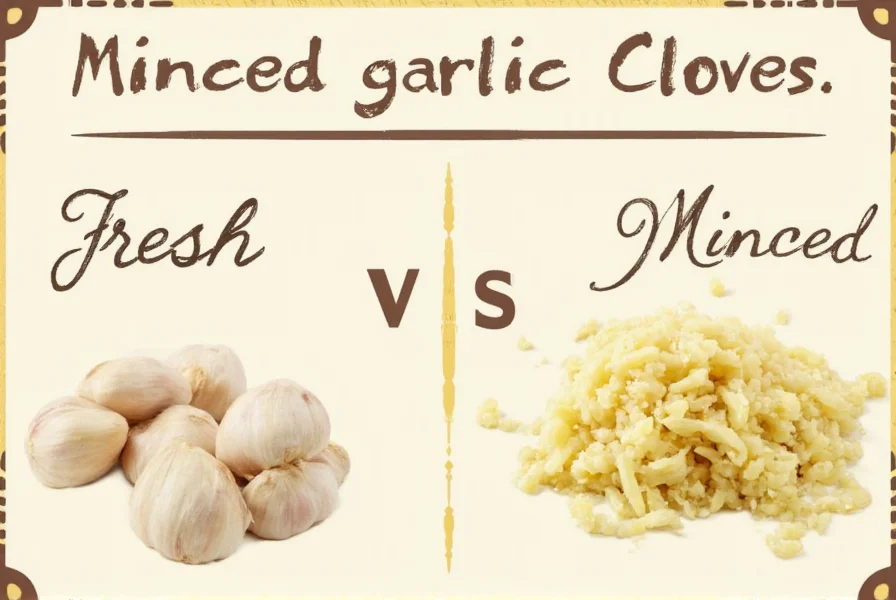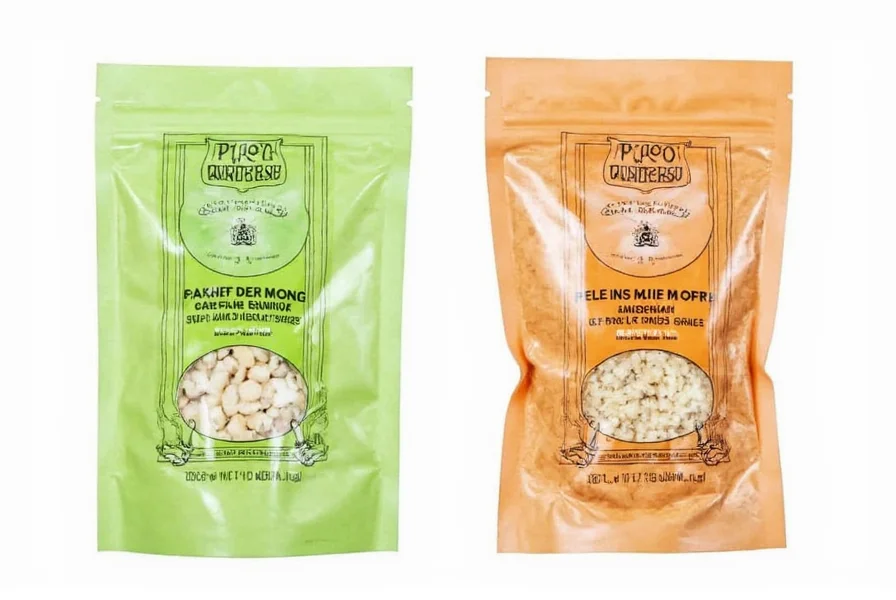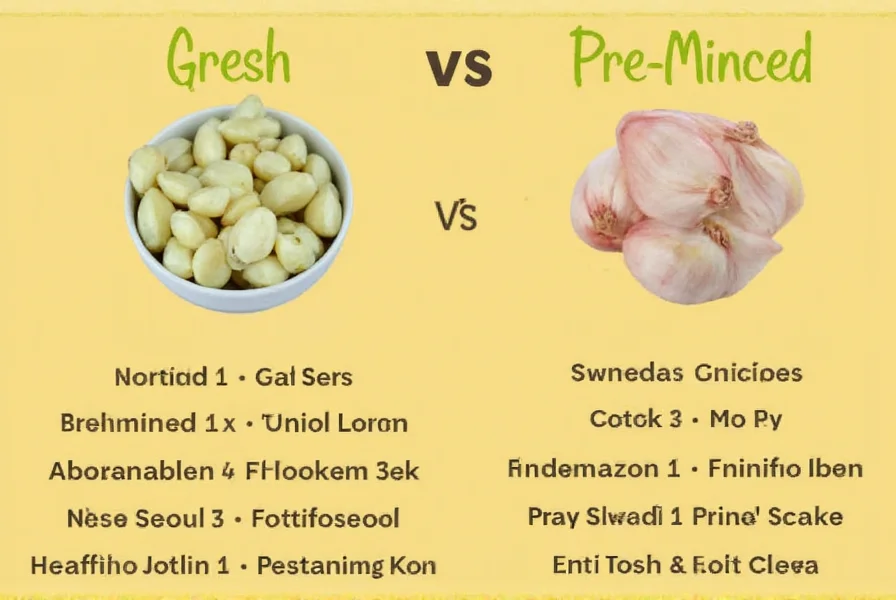When you mince garlic cloves, you're transforming them into tiny, consistent pieces that integrate seamlessly into sauces, marinades, and sautéed dishes. This culinary technique maximizes garlic's flavor potential by increasing its surface area, allowing more of its aromatic compounds to interact with other ingredients. Understanding how to properly work with minced garlic can significantly elevate your cooking results.
What Exactly Are Minced Garlic Cloves?
Minced garlic refers to garlic cloves that have been cut into very fine, uniform pieces, typically between 1-2 millimeters in size. This differs from chopped garlic, which features larger, less consistent pieces. The mincing process breaks down garlic's cell structure, releasing allicin and other volatile compounds responsible for garlic's distinctive flavor and aroma.
When you mince garlic cloves properly, you create small particles that distribute evenly throughout your dish, ensuring consistent flavor without overwhelming bites of raw garlic. This preparation method works particularly well for dishes where you want garlic flavor to permeate the entire recipe rather than providing distinct garlic pieces.
Fresh Minced Garlic vs. Pre-Minced: Key Differences
| Characteristic | Fresh Minced Garlic | Pre-Minced (Jarred) Garlic |
|---|---|---|
| Flavor Profile | Bright, complex, with subtle sweet notes | Flat, sometimes metallic or bitter |
| Texture | Fresh, moist, with visible cell structure | Often mushy or overly uniform |
| Shelf Life | 1-2 days refrigerated | 2-3 months refrigerated |
| Ingredients | Garlic only | Garlic, citric acid, water, preservatives |
| Cost | Lower per ounce | Higher per ounce |
Why Fresh Minced Garlic Outperforms Pre-Packaged Alternatives
The superior flavor of freshly minced garlic cloves comes from chemical reactions that occur when garlic cells are broken. When you mince garlic properly, you release alliinase enzymes that convert alliin into allicin—the compound responsible for garlic's characteristic aroma and health benefits. Pre-minced garlic loses potency because these reactions occur prematurely during processing and storage.
Professional chefs consistently prefer freshly minced garlic for critical dishes because it provides brighter, more complex flavor notes. The difference becomes particularly noticeable in delicate sauces, salad dressings, and finishing applications where garlic flavor should shine without overwhelming other ingredients.

Mastering the Art of Mincing Garlic Cloves
Learning how to mince garlic cloves properly takes practice but yields significantly better results than haphazard chopping. Follow these steps for perfectly minced garlic every time:
- Peel the garlic clove by placing it under your knife blade and applying firm pressure
- Cut off the root end and any green sprout (if present)
- Slice the clove lengthwise into thin planks
- Cross-cut the planks into fine strips
- Gather the strips and rock your knife back and forth to create uniform mince
- For extra-fine mince, sprinkle with a pinch of salt and use knife to scrape across board
Pro tip: When mincing multiple cloves, keep your knife tip on the cutting board and only move the handle up and down. This technique provides better control and creates more consistent pieces. The salt trick helps break down garlic fibers further while preventing sticking.
Culinary Applications for Minced Garlic
Understanding when to use minced garlic versus other preparations can transform your cooking. Minced garlic works best in applications where you want even flavor distribution without distinct garlic pieces:
- Sauces and gravies - Minced garlic integrates seamlessly into liquid bases
- Marinades - Small particles penetrate proteins more effectively
- Compound butters - Uniform distribution creates consistent flavor
- Salad dressings - Prevents overpowering garlic bites
- Stuffings and fillings - Blends with other ingredients without textural disruption
For dishes requiring garlic flavor without visible pieces, minced garlic is superior to sliced or crushed alternatives. However, for roasting or grilling applications, whole cloves or larger pieces work better to prevent burning.
Preserving Minced Garlic Freshness
Proper storage is crucial when working with freshly minced garlic cloves. Unlike whole garlic, which can last months at room temperature, minced garlic begins deteriorating within hours. Here's how to maximize freshness:
- Refrigerate in an airtight container for up to 48 hours
- Store under a thin layer of olive oil to prevent oxidation
- Freeze in ice cube trays with oil for longer storage (up to 3 months)
- Avoid plastic containers that can retain garlic odor
- Never store minced garlic at room temperature for more than 2 hours
When storing minced garlic with oil, always keep it refrigerated to prevent botulism risk. The oil should completely cover the garlic, and you should use it within one week for optimal safety and flavor.

Substitution Guidelines for Minced Garlic
Understanding minced garlic substitution ratios ensures recipe success when fresh garlic isn't available. Here's a reliable conversion guide:
- 1 fresh garlic clove = 1/2 teaspoon minced garlic
- 1 teaspoon jarred minced garlic = 1.5 fresh cloves (due to flavor degradation)
- 1/8 teaspoon garlic powder = 1 fresh clove (use sparingly)
- 3-4 cloves roasted garlic = 1 clove raw minced garlic (for milder flavor)
When substituting pre-minced garlic for fresh, increase the amount by 50% to compensate for flavor loss during processing. For delicate dishes, consider making your own paste from fresh garlic rather than using jarred alternatives to maintain flavor integrity.
Frequently Asked Questions
How much minced garlic equals one garlic clove?
One average-sized garlic clove yields approximately 1/2 teaspoon of minced garlic. Larger cloves may produce up to 3/4 teaspoon, while smaller cloves yield closer to 1/3 teaspoon. For precise measurements in critical recipes, weigh your minced garlic—one medium clove typically weighs 5-7 grams.
Why does my minced garlic turn bitter?
Minced garlic turns bitter when exposed to high heat for too long. The small particle size of minced garlic means it burns quickly—often in under 30 seconds. To prevent bitterness, add minced garlic to hot oil for only 15-20 seconds before adding liquid ingredients or proceeding to the next cooking step. Never let minced garlic brown excessively.
Can I freeze minced garlic for later use?
Yes, you can freeze minced garlic successfully. The best method is to place portions in ice cube trays, cover with olive oil, and freeze. Once solid, transfer the cubes to an airtight container. Frozen minced garlic maintains quality for 2-3 months. Thaw cubes directly in your cooking pan—never thaw at room temperature, which can promote bacterial growth.
Does minced garlic lose nutrients compared to whole cloves?
Minced garlic actually increases certain beneficial compounds through the enzymatic reaction that occurs when cells are broken. Allicin production peaks about 10 minutes after mincing. However, prolonged exposure to air and heat degrades these compounds. For maximum nutritional benefit, let minced garlic rest for 10 minutes before cooking, and avoid overcooking to preserve its health-promoting properties.
How can I remove garlic smell from my hands after mincing?
To remove garlic odor from hands after mincing cloves, rub your hands with stainless steel (like a spoon) under cold running water. Alternatively, make a paste of baking soda and water, scrub hands thoroughly, then rinse. Lemon juice or vinegar can also neutralize the sulfur compounds responsible for garlic smell. Always wash hands immediately after handling garlic for best results.











 浙公网安备
33010002000092号
浙公网安备
33010002000092号 浙B2-20120091-4
浙B2-20120091-4